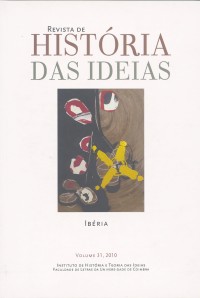Please use this identifier to cite or link to this item:
https://hdl.handle.net/10316.2/41506| DC Field | Value | Language |
|---|---|---|
| dc.contributor.author | Ruiz-Peinado Alonso, Jose Luis | - |
| dc.date.accessioned | 2017-04-30T14:45:42Z | |
| dc.date.accessioned | 2020-09-30T11:27:37Z | - |
| dc.date.available | 2017-04-30T14:45:42Z | |
| dc.date.available | 2020-09-30T11:27:37Z | - |
| dc.date.issued | 2010 | - |
| dc.identifier.issn | 0870-0958 | - |
| dc.identifier.issn | 2183-8925 (digital) | - |
| dc.identifier.uri | https://hdl.handle.net/10316.2/41506 | - |
| dc.description.abstract | La noción de frontera en la Amazonia brasileña evoluciono desde sus inicios, desde el concepto inicial creado por las coronas ibéricas hasta su dem arcación definitiva en el siglo XX. Desde inicios del siglo XIX la Amazonia estuvo marcada por una extraordinaria inestabilidad político-militar. Su adhesión tardía a la independencia de Brasil (1823), el debate sobre la esclavitud y la explosión de la Cabanagem fueron procesos que tuvieron como protagonistas no sólo a las elites políticas lusobrasileñas, sino también a diferentes grupos cimarrones e indígenas que actuaban desde amplios e intrincados espacios de frontera, atentos a las ideas revolucionarias que provenían del exterior y que jugaron un papel fundamental en la construcción de la especificidad del norte de Brasil. | spa |
| dc.description.abstract | The notion of frontier in the Brazilian Amazon evolved since its beginning, since the initial concept created by the Iberian royal houses until its final delimitation in the twentieth century. Since the beginning of the nineteenth century, the Amazon was marked by extraordinary political-military instability. For the Amazon, the late adherence to the independence of Brazil (1823), the debate about slavery and the explosion of Cabanagem were processes that had as protagonists not only the Luso-Brazilian political elites, but also different groups of the Maroon and indigenous people that acted from broad and intricate frontier spaces, on the look out for revolutionary ideas that came from abroad and which played an essential role in the construction of the specificity of the North of Brazil. | eng |
| dc.language.iso | spa | - |
| dc.publisher | Imprensa da Universidade de Coimbra | - |
| dc.rights | open access | - |
| dc.title | Malos vecinos en buenas tierras: la demarcación de las fronteras norte de Brasil: siglos XVII a XIX | por |
| dc.title.alternative | Bad neighbours in good lands: the delimitation of the frontiers of the North of Brazil: from the seventeenth to the nineteenth centuries | por |
| dc.type | article | - |
| uc.publication.collection | Revista de História das Ideias vol. 31 | - |
| uc.publication.firstPage | 117 | - |
| uc.publication.lastPage | 135 | - |
| uc.publication.location | Coimbra | - |
| uc.publication.journalTitle | Revista de História das Ideias | - |
| uc.publication.volume | 31 | por |
| dc.identifier.doi | 10.14195/2183-8925_31_5 | - |
| uc.publication.orderno | 6 | - |
| uc.publication.area | Artes e Humanidades | - |
| uc.publication.manifest | https://dl.uc.pt/json/iiif/10316.2/41506/248877/manifest?manifest=/json/iiif/10316.2/41506/248877/manifest | - |
| uc.publication.thumbnail | https://dl.uc.pt/retrieve/11873661 | - |
| item.grantfulltext | open | - |
| item.fulltext | With Fulltext | - |
| Appears in Collections: | Revista de História das Ideias | |
Files in This Item:
| File | Description | Size | Format | |
|---|---|---|---|---|
| malos_vecinos_en_buenas_tierras.pdf | 8.09 MB | Adobe PDF |  |
Items in DSpace are protected by copyright, with all rights reserved, unless otherwise indicated.
